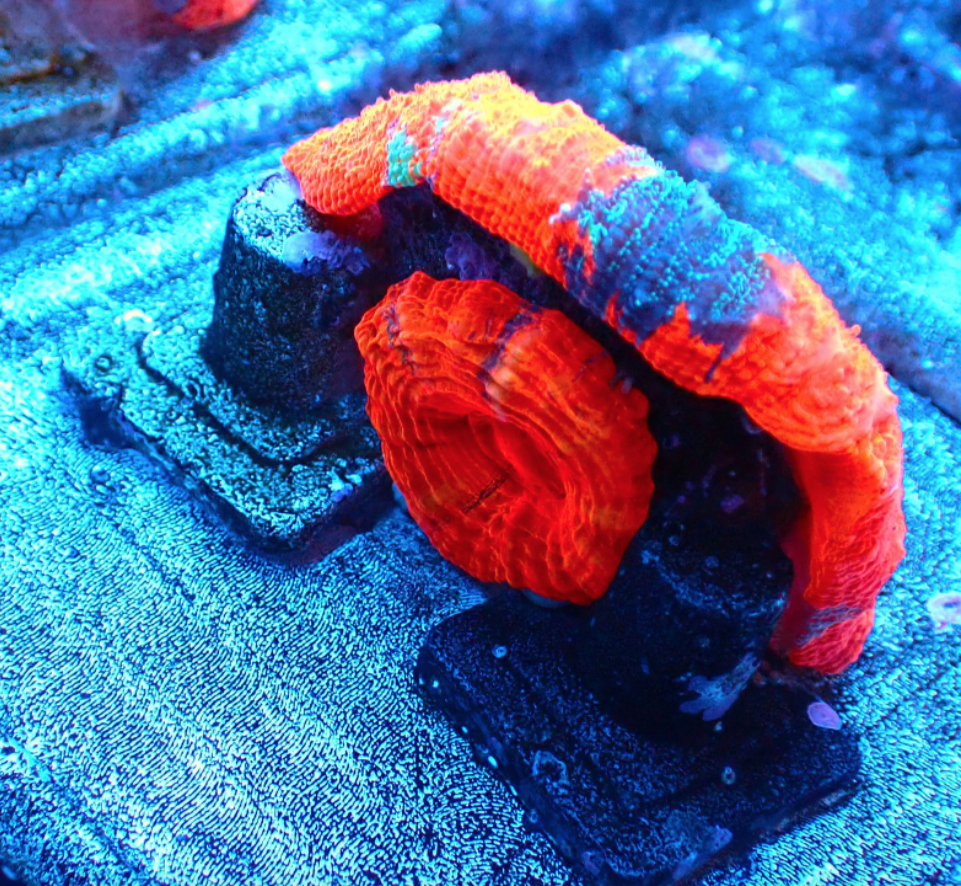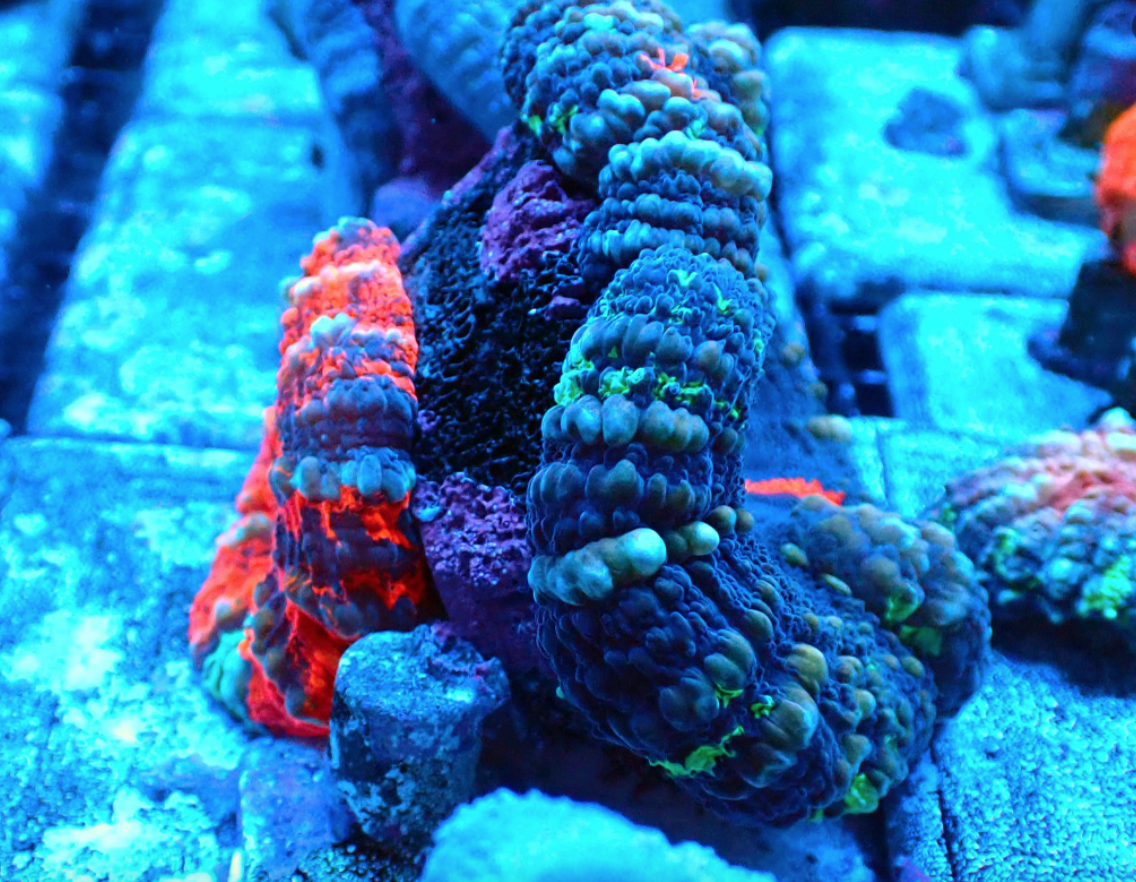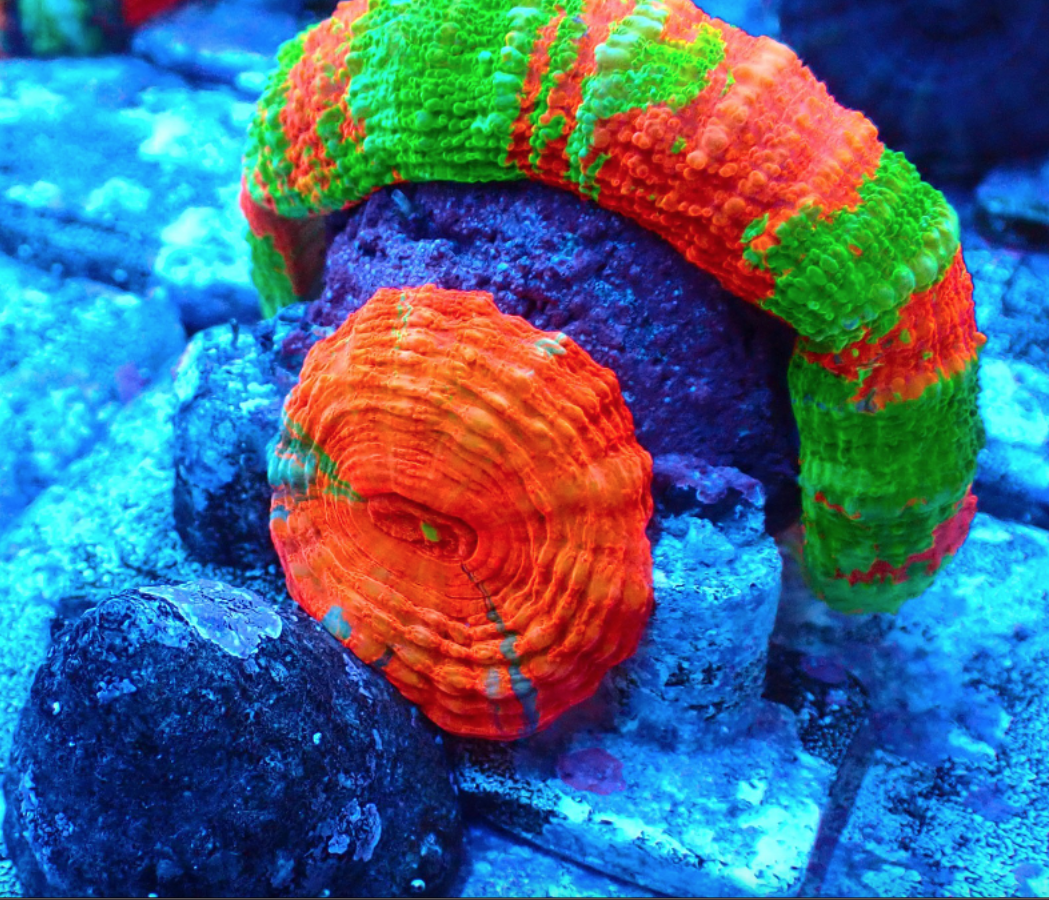Captive propagation of Homophyllia australis isn’t as easy as many other corals. Being a single polyp LPS coral, cutting through it with a coral saw usually ends in its demise. They have been captive spawned recently but the methods remain beyond most of us to raise them, and nearly all Australian Scolys remain wild-collected from the Great Barrier Reef.
But Ultra Coral Australia wants to make all Aussie corals sustainable via aquaculture, and yesterday provided a snippet of intriguing information about what they’ve learned working with Scolys at their farm over the last 10 years. When they cut some of the skeleton off underneath the coral, new flesh, and a new polyp grew back.
“We have been farming scolymia in this manner for approx 10 years,” says UCA. “We accidentally discovered this method when we were first trimming excess bone off the bottom after collection. We can cut these off every 3-4 months and they just repeat the process.”

Where to cut
“We look at the interior valley and gauge where to trim them off at. We don’t expose just trim extremely close, if you make a hole accidentally it will still form a new Scolymia but it takes a lot longer.”
Information like this may transform Homaphyllia australis propagation overnight and we predict that many reefers will be upending and inspecting the undersides of their Scolys with a view to trying it very soon. It may also explain why some wild-collected Scolys arrive twinned, and back to back. Although not banned from export, Homaphyllia and other corals from the Great Barrier Reef are banned from import into some European countries so with restricted supply and the fact that different colored specimens sprout from the base, propagating Homaphyllia australis in this way a very interesting prospect for hobbyists and the coral trade alike. Especially if you can turn one expensive Master Scoly into two.




